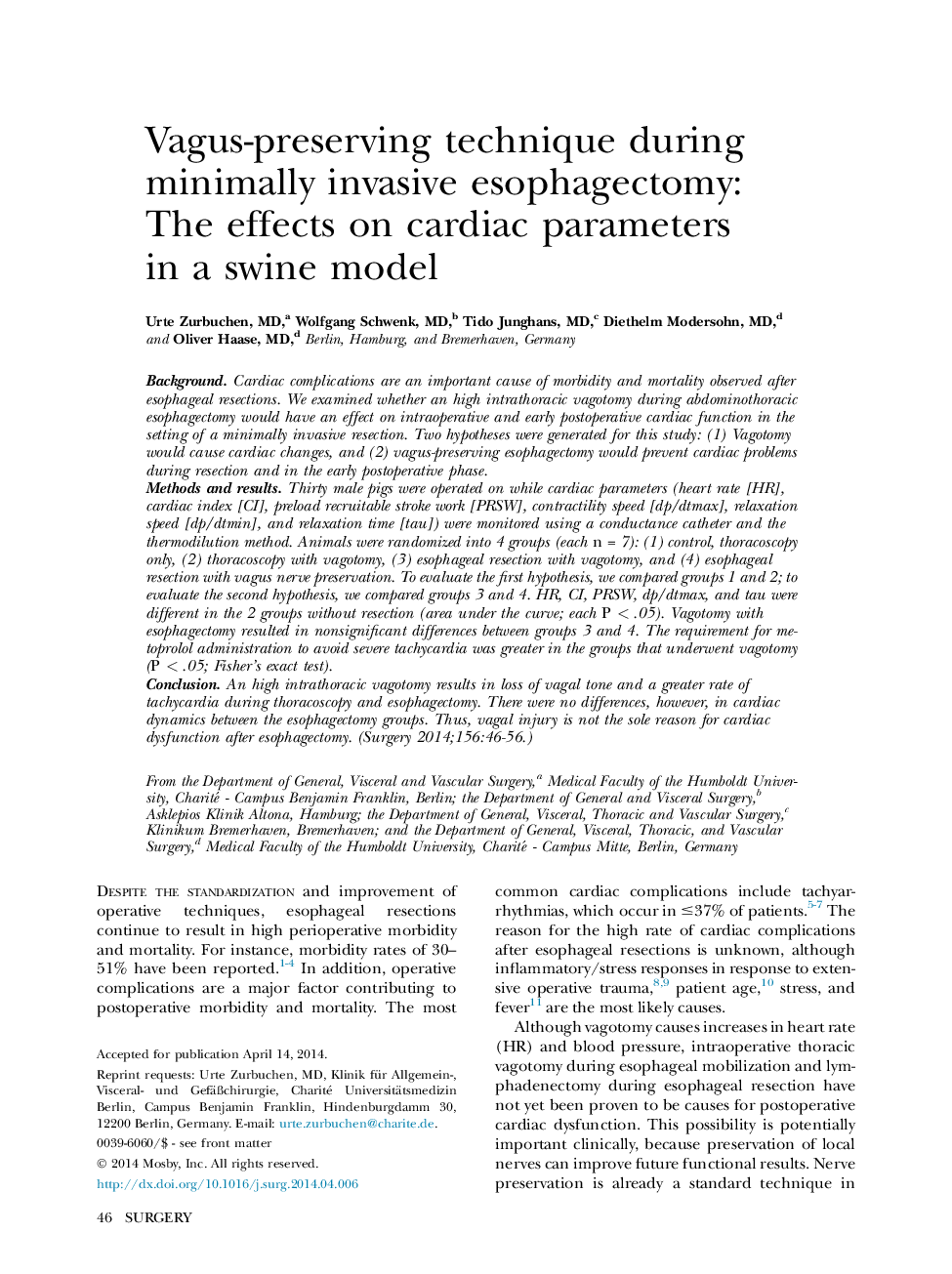| کد مقاله | کد نشریه | سال انتشار | مقاله انگلیسی | نسخه تمام متن |
|---|---|---|---|---|
| 4307945 | 1289263 | 2014 | 11 صفحه PDF | دانلود رایگان |
BackgroundCardiac complications are an important cause of morbidity and mortality observed after esophageal resections. We examined whether an high intrathoracic vagotomy during abdominothoracic esophagectomy would have an effect on intraoperative and early postoperative cardiac function in the setting of a minimally invasive resection. Two hypotheses were generated for this study: (1) Vagotomy would cause cardiac changes, and (2) vagus-preserving esophagectomy would prevent cardiac problems during resection and in the early postoperative phase.Methods and resultsThirty male pigs were operated on while cardiac parameters (heart rate [HR], cardiac index [CI], preload recruitable stroke work [PRSW], contractility speed [dp/dtmax], relaxation speed [dp/dtmin], and relaxation time [tau]) were monitored using a conductance catheter and the thermodilution method. Animals were randomized into 4 groups (each n = 7): (1) control, thoracoscopy only, (2) thoracoscopy with vagotomy, (3) esophageal resection with vagotomy, and (4) esophageal resection with vagus nerve preservation. To evaluate the first hypothesis, we compared groups 1 and 2; to evaluate the second hypothesis, we compared groups 3 and 4. HR, CI, PRSW, dp/dtmax, and tau were different in the 2 groups without resection (area under the curve; each P < .05). Vagotomy with esophagectomy resulted in nonsignificant differences between groups 3 and 4. The requirement for metoprolol administration to avoid severe tachycardia was greater in the groups that underwent vagotomy (P < .05; Fisher’s exact test).ConclusionAn high intrathoracic vagotomy results in loss of vagal tone and a greater rate of tachycardia during thoracoscopy and esophagectomy. There were no differences, however, in cardiac dynamics between the esophagectomy groups. Thus, vagal injury is not the sole reason for cardiac dysfunction after esophagectomy.
Journal: Surgery - Volume 156, Issue 1, July 2014, Pages 46–56
